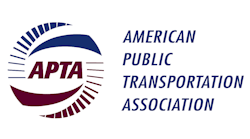Last month I wrote about the impending vote to proceed with the Milwaukee Streetcar project, and the decades of debate that had so far stalled its implementation. On February 10, the Milwaukee Common Council voted to approve with a projected completion date of mid-2018. Despite the vote, opposition to the project continues with a petition drive and threat of lawsuits, and several aldermen are basing future mayoral campaigns on opposing the streetcar. Countering the opposition is a growing contingent of business leaders who consider a robust transit system vital to the success of downtown Milwaukee. More to follow as this story unfolds.
This issue publishes just prior to the APTA Legislative Conference in Washington, D.C., and will be distributed to attendees. Transit leaders and suppliers to the industry gather annually to deliver their perspectives to Congress on the value and costs of transit. Much like all infrastructure, the cost of buses, trains and the organizations to run them is far more than anyone would like to pay, and the mechanisms (taxes) to fund transit are among the most contested national issues. With concrete falling from bridges, entire bridges collapsing and 100-year-old water pipes bursting, there are definitely competing priorities for limited funding.
Over past years, the transportation and infrastructure funding strategy has been to delay a permanent solution. This pattern is likely to continue, with various repatriation schemes being floated that offer one-time lower tax rates for corporate funds brought back to the U.S. currently in banks overseas. Raising the gas tax, often discussed and easily implemented, faces strong opposition from the president and both sides of the congressional aisle, so this too is unlikely to become law.
What can advocates for federal funding of transit do to ensure transit receives its fair share? Tell your story. Tell your newspaper and other news outlets: how many people get to work daily on your buses; how many employees work at your company because your products are used nationwide at transit agencies; why your neighborhood is thriving because transit works for you and your neighbors.




